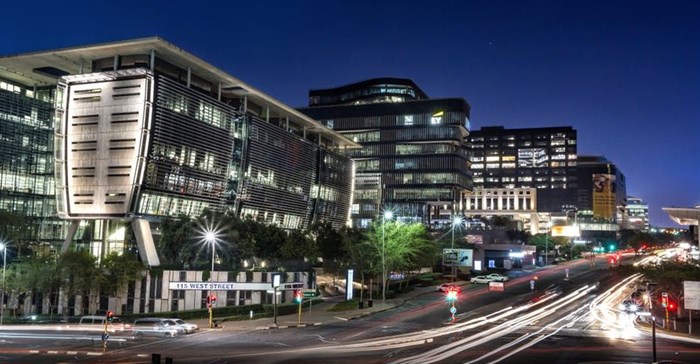
Electricity customers should brace themselves for steeper increases. shutterstock
The first huge problem is debt of R488bn (about $32bn) which Eskom cannot service, of which, R350bn is guaranteed by government. Sales volumes declined by 4.7% between 2009 and 2019, based on data in Eskom annual integrated reports. Operational costs also increased by 30% in five years.
The energy availability factor – what’s available from power stations – has declined by about 20% over the past 20 years as Eskom struggles to repair and maintain its previously neglected and ageing fleet of power stations. This has resulted in increasing load-shedding, which is damaging investor sentiment.
The utility also has environmental problems: emissions exceed permitted levels.
Another problem is the culture of non-payment: Eskom sells about half of its power to municipalities and the balance directly to customers. Malfeasance and mismanagement have damaged many municipalities. In 2019/20, municipalities owed 71.7% of what they’d been invoiced. An anti-apartheid electricity payment strike by Soweto residents has continued through 25 years of democracy. Despite Eskom’s recently more aggressive approach to debt collection it had R38 billion in receivables outstanding in June 2020.
There have also been allegations of corruption throughout the organisation.
Government has taken some steps to try to fix Eskom.
In 2018 a new board was appointed with instructions to clean up corruption. It removed several senior managers and is pursuing thousands of employees with conflicts of interest.
President Ramaphosa appointed a task team to advise him. Their report has not been made public.
The minister of public rnterprises, Pravin Gordhan, appointed a Technical Review Team to advise on operations. Eskom is trying to implement its recommendations. Gordhan followed with an “Eskom Roadmap” (2019) announcing the intention to separate the power utility into three subsidiaries: generation, transmission and distribution. This is essentially an attenuated version of reforms in the 1998 White Paper on Energy Policy. Previous attempts to implement the White Paper reforms were unsuccessful.
Read more:
Why South Africa's latest plan for state-owned power giant could work
Eskom says it’s making good progress with the roadmap but it has a long way to go to return energy availability to historical highs.
The elephant in the room has been the gross debt of R488bn at March 2020. The government appointed a chief restructuring officer but no report and no solutions to the debt problem emerged.
Government has kept Eskom afloat with R188 billion in bailouts over five years – with more to come. These roughly cover the interest but not the principal debt.
Possible solutions
There are three possible solutions. Either taxpayers or electricity customers, or a combination, will have to pay Eskom’s debt. There has also been loose talk of using funds from the Unemployment Insurance Fund and the Government Employees Pension Fund but no plan has emerged.
The longer government dithers over this decision, the bigger the problem becomes. Whatever the decision, there will be pain for electricity customers or taxpayers. It seems that government cannot bring itself to inflict this inevitable pain.
Continuing to make taxpayers pay isn’t good for the economy. But the National Energy Regulator of South Africa, which regulates Eskom’s tariffs, says Eskom’s costs are neither prudent nor efficient. That leaves the ball in the taxpayer’s court.
The regulator will have to change its stance or throw the whole country into default. Electricity customers should brace themselves for further steep increases.
Meanwhile, intermittent load-shedding continues. And several commentators have predicted shortages of generation capacity from 2021 to 2023. Eskom forecasts a 4,000 megawatt shortfall in 2021, assuming its fleet is operating at an optimistic 70% energy availability factor by 2021.
What the government is banking on
Renewable energy projects that were delayed should commence soon and supply 2,200MW. Independent power producers have been invited to deliver 2,000MW by June 2022, a tall order. Bidding to supply 11,813MW by building new power stations is about to open. Large firms are allowed to generate power for their own use. Small businesses can get tax breaks for installing generators under 1MW. This may be the quickest option, especially if they were allowed to sell surplus power back into the grid. The licensing requirement has also been removed for these small generators.
Read more:
Power shortages will remain a big challenge in a post-Covid-19 South Africa
The few municipalities in good financial standing are now allowed to buy power from independent power producers. But the Municipal Finance Management Act makes this difficult.
All the independent power producers that supply the national grid have so far received generous government guaranteed 20-year tariff and off-take agreements. This means it’s been profitable and low risk for independent power producers to invest in producing power. But after the economic impact of Covid-19, will the government be able to continue taking on such liabilities? Anecdotal evidence suggests that the banks won’t lend to independent power producers without government guarantees, especially when Eskom has undermined them in the past.
Going forward
Eskom is broke and can’t invest in any further capacity. Independent power producers will have to do it. But if there are no 20-year government guarantees they will need an independent transmission and market operator that they trust.
Unfortunately, the Eskom roadmap doesn’t offer that. It only offers an Eskom-owned version which still needs various government authorisations but is scheduled for March 2022.
Will independent power producers have sufficient faith in Eskom’s transmission subsidiary to invest billions? If not, the country may be without lights some of the time for years to come, unless more thorough market reforms occur.
This article is republished from The Conversation under a Creative Commons license. Read the original article.


















